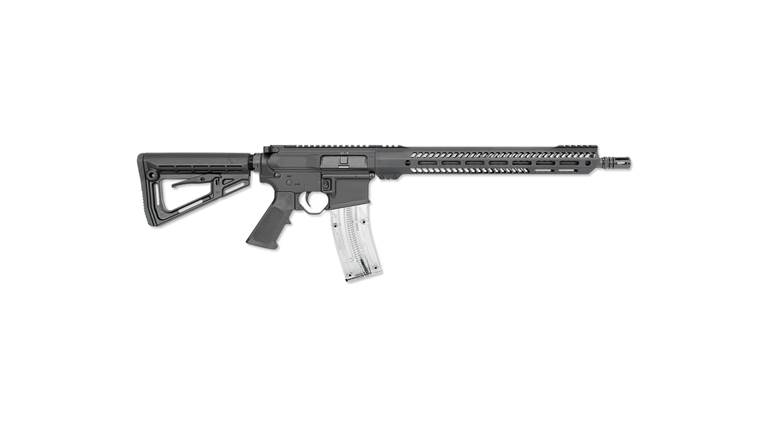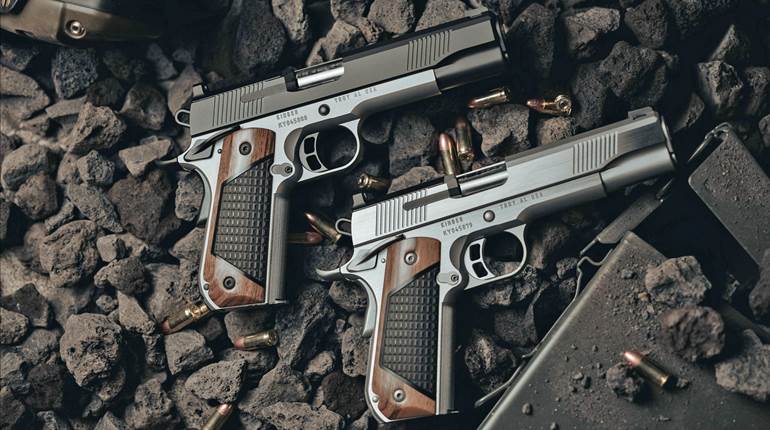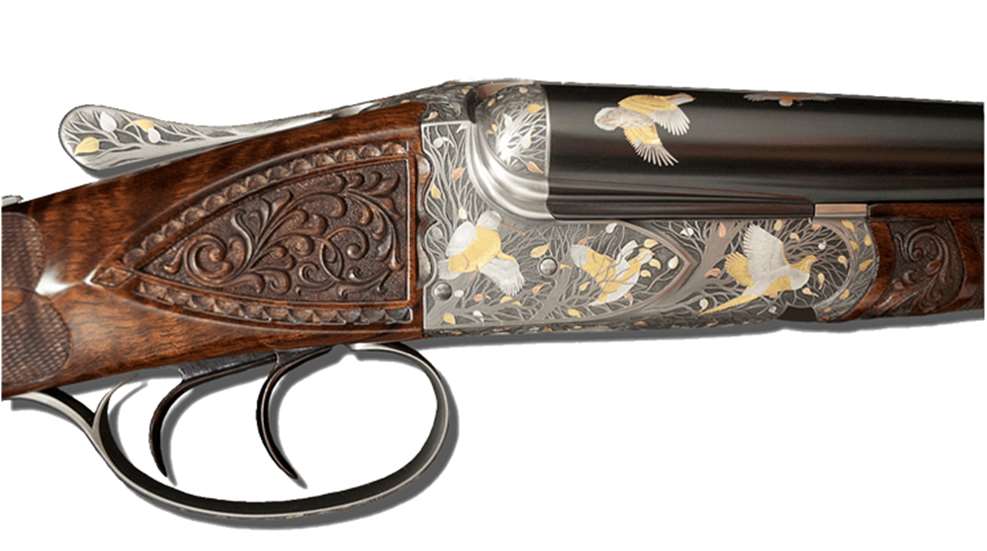
Top: Current production A.H. Fox shotgun, courtesy Connecticut Shotgun Mfg. Co.
Ansley H. Fox was a somewhat troubled man, gifted in mechanics and the ability to design, promote and invent products, but apparently lousy in business acumen. Born in 1870, Fox began manufacturing his first shotguns in 1896 under the name Fox Gun Co., of Baltimore, Md. This effort petered out pretty quickly. Production was very low, and surviving examples of this shotgun are few and far between. Around 1900 he took employment at the Baltimore Gun Co., but this lasted a bit less than three years. Fox then founded the Philadelphia Gun Co. in 1904, where he continued to refine his shotgun design.
Fox was by all accounts a superb shotgun shot, and like most inventors he was very impressed with himself and his inventions. He delighted in sharing that information to just about anyone who would listen. Two years after he started the Philadelphia Gun Co., Fox founded the A.H. Fox Gun Co., of Philadelphia. Using his success at shotgun events as a launch pad, Fox began producing some high-quality double-barrel shotguns in a variety of grades. He brashly claimed that his shotguns were the finest in the world. 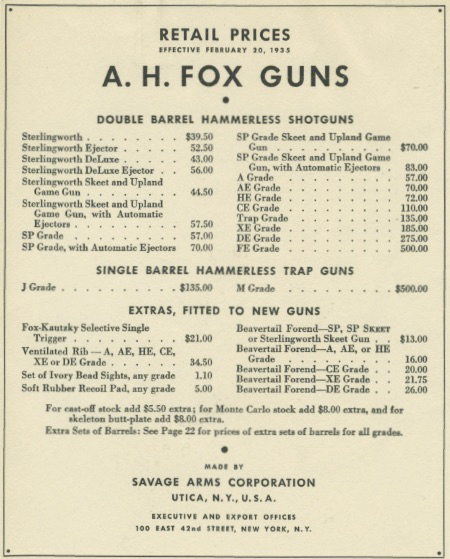
Whether they were the finest can be debated, but Fox did produce a very solid boxlock double with internal hammers. What separated the Fox gun from similar boxlocks was a barrel extension combined with a horizontal-axis rotary fastener to lock the barrels into battery and a top lever for opening. The double triggers were compact, each engaging a sear on a hammer with an integral firing pin. All together, the Fox was a sturdy and reliable shotgun and relatively sleek and stylish for its time.
Fox initially offered his shotgun in three grades, A, B and C, though the catalog mentioned D and F grades. The guns were identical, save for embellishments like engraving and wood figure and checkering. All were in 12 gauge only, until 1912 when 16- and 20-gauge guns were offered. These first Fox guns were furnished with extractors, but ejectors were available in 1907 for an additional $15 over the base price of $50 for the A grade. Moving up the scale, a B Grade in 1907 would set you back $75, and a D Grade was an even C-note. By this time an F Grade was offered for the unheard of sum of $500. Compare this to the going price of a utility shotgun at $10 to $20 at that time, and it is clear Fox’s intended market was the well-to-do.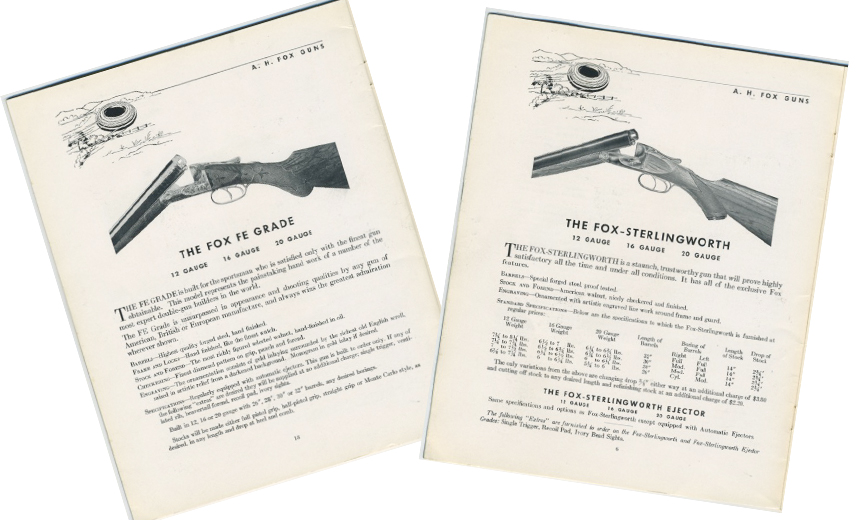
To broaden his market, Fox introduced the Sterlingworth model in 1910, priced at $25. The Sterlingworth was a utility-grade field gun utilizing through-lump barrels, instead of Fox’s normal barrel extension and horizontal axis rotary fastener. This produced a shotgun frame slightly wider than Fox’s system, but overall the shotguns had a very similar profile and feel. The Sterlingworth was a rather plain gun, but special order options were available—barrel lengths, chokes, etc. A 16-gauge Sterlingworth debuted in 1916. The Sterlingworth remained in the line until 1942.
Alas, it was Fox’s lack of business acumen and his personality that separated him from the company he founded in 1912. Company investors had enough of Fox, and they bought him out of the company. Fox bedraggled around a bit, starting up another company, the Fox Motor Company in November 1919. It, too, had its fits and spurts under the magniloquent Fox. The cars he built featured air-cooled motors, but getting investment capital was tough. Fox finally made a few cars for market in 1921, but this venture came to its end in 1923. Little was heard from Fox after that.
The Fox Shotgun Co., though, continued to produce some fine shotguns until late 1929. Savage acquired the company and made somewhat cheaper versions of the shotgun until the start of World War II. About the time Fox had been bought out, the company brought out its shotgun in 16 and 20 gauge, touting them as “The Most Perfectly Proportioned Small-Gauge Gun Ever Built.” In 1914, the company began offering the option of a Fox/Kautzky single, selective trigger. Most shotguns by this time had jettisoned Damascus barrels; Fox had made its barrels from Krupp Fluid Steel (Germany), but in the higher grades, British Whitworth fluid steel was available. Barrel lengths ran from 26” to 32” with appropriate chokes. Like most gunmakers of the day, options were available, limited only by the buyer’s pocketbook.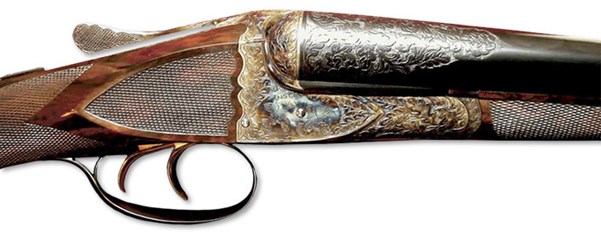
Current production XE Grade A.H. Fox (Photo courtesy of Connecticut Shotgun Manufacturing)
Other notable variations included the XE grade, introduced in 1915. Single-barrel trap guns debuted in 1919 in J, K and L grades. Grades G and HE came out in 1922. One of the most celebrated Fox shotguns, a 12-gauge FE grade belonged to Theodore Roosevelt, and it accompanied the president on his 1909-1910 African safari. It must have impressed Roosevelt because in a letter to Fox he exclaimed, “The double-barreled shotgun has come and I really think it is the most beautiful gun I have ever seen.”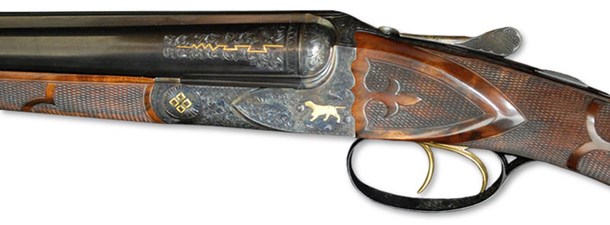
Current production FE Grade (Photo courtesy of Connecticut Shotgun Manufacturing)
Savage actually bought out Fox in November 1929, and the following year moved the company from Philadelphia to Utica, N.Y. During its reorganization under Savage, several grades were replaced. The GE grade was one of the first to be jettisoned, followed by the 20-gauge HE grade in 1932. That same year The Trap Grade Double and SP grades were introduced. A Waterfowl Grade was brought out in 1934. World War II largely spelled the end of the Fox shotgun, though a few leaked out as late as 1946. Even fewer guns were assembled inconsistently and made from parts on hand as late as the 1960s.
I bought a well-worn A Grade Fox nearly 40 years ago for $200 at a gun show. The wood had been fairly nice until a previous owner sanded away the checkering and refinished it with a household varnish. As a shooter, it has been a stalwart, never-fail backup gun for ducks and pheasants. I keep swearing that one day I’ll restock it, shorten the barrels a bit and have it bored and threaded for thin-wall choke tubes. Like a lot of things, it’s on a long list of hope-to-get-to projects.
Savage-Stevens used to put out a Fox Model B that is a faint shadow of the once great American boxlock. Alas, the expenses of making a side-by-side shotgun have been overtook by the lack of a market for it and shotguns that can do more for less money. The used market remains good for original Fox shotguns. Sterlingworths command anywhere from $300 to $1,500, depending upon condition. The higher grades and some single-barrel trap guns can fetch into five figures. The Model Bs are priced as utility guns would be, $300 to $700 for a really pristine example.
The Fox may not have been a refined sidelock, tailored for some well-heeled original owner, yet it was and remains one of the great American-made shotguns of the 20th century. It may not command the awe and respect of tweed shooting jackets and driven pheasants on an estate, but it does command some appreciation as a well-made bird gun, used but not abused, by an owner of some substance.





























